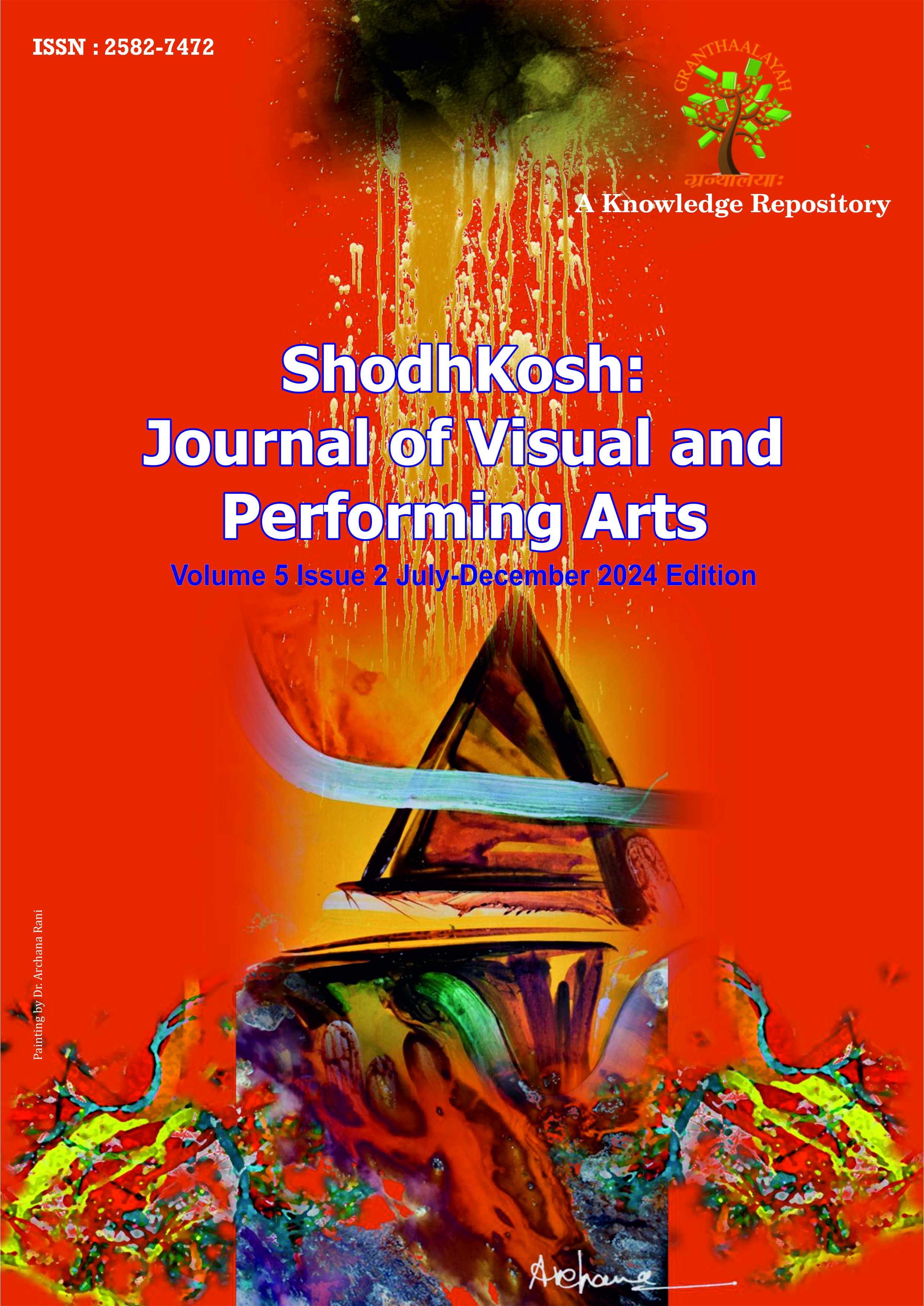EXPLORING URBAN PARKS: PERFORMANCE ANALYSIS AND IMPROVEMENT STRATEGIES FOR AMBEDKAR MEMORIAL PARK, LUCKNOW
DOI:
https://doi.org/10.29121/shodhkosh.v5.i2.2024.1191Keywords:
Urban Green Space, Comfort, Environmental Benefits, Emotional Wellbeing, Social InclusionAbstract [English]
Urban parks serve as vital green lungs for bustling cities, offering sanctuary, fostering community, and injecting life into concrete jungles. Their role in enhancing livability through recreation, environmental benefits, and social cohesion is undeniable. In Lucknow, Uttar Pradesh, stands Dr. Bhimrao Ambedkar Samajik Parivartan Prateek Sthal, popularly known as Ambedkar Park – a unique blend of public park, memorial, and architectural marvel. Sprawling across 108 acres, this majestic complex pays homage to Dr. B.R. Ambedkar, the architect of the Indian Constitution and champion of social justice, while offering a verdant escape within the city's hustle. However, questions persist about its true contribution to urban green space and its potential for enhancing livability. This research delves into a comprehensive study of Ambedkar Park, assessing its current state and proposing strategies to revitalize it into a more vibrant and inclusive space. A mixed-methods approach, including site visits, SWOT analysis, surveys, and focus group discussions, was employed to gather comprehensive data on the park's status and user perceptions. By highlighting existing challenges and opportunities, it ultimately leads to a discussion on potential improvements for a more vibrant and livable urban green space.
References
Boddy, J. (2016). Research Methods in Psychology. SAGE Publications.
Cui, H., Maliki, N. Z., & Wang, Y. (2024). The Role of Urban Parks in Promoting Social Interaction of Older Adults in China. Sustainability, 16(5). https://doi.org/10.3390/su16052088 DOI: https://doi.org/10.3390/su16052088
Flick, U. (2014). An Introduction to Qualitative Research, AGE Publications Limited.
Francis, J., & Giles-Corti, B. (1998). Quality of Public Open Spaces. Urban Design International, 49-60.
Frumkin, H., Bratman, G. N., Breslow, S. J., Cochran, B., Kahn Jr, P. H., Lawler, J. J., Levin, P. S., Tandon, P. S., Varanasi, U., Wolf, K. L., & Wood, S. A. (2017). Nature Contact and Human Health: A Research Agenda. Environmental Health Perspectives, 075001. https://doi.org/10.1289/EHP1663 DOI: https://doi.org/10.1289/EHP1663
Fuller, R. A. (2007). Bird Communities and Vegetation Structure in Urban Parks: A Longitudinal Study. Biological Conservation, 502-511.
Gill, S. E., Handley, J., Ennos, A. R., & Pauleit, S. (2016). Adapting Cities for Climate Change: The Role of the Green Infrastructure. Built Environment, 115-133. https://doi.org/10.2148/benv.33.1.115 DOI: https://doi.org/10.2148/benv.33.1.115
Gómez-Baggethun, E., Barton, D. N., & Lavorel, S. (2013). Urbanization, Biodiversity and Ecosystem Services: Challenges and Opportunities, Springer, 175-251. https://doi.org/10.1007/978-94-007-7088-1_11 DOI: https://doi.org/10.1007/978-94-007-7088-1_11
Kondo, M. C., Fluehr, J. M., McKeon, T., & Branas, C. C. (2018). Urban Green Space and Its Impact on Human Health. International Journal of Environmental Research and Public Health, 445. https://doi.org/10.3390/ijerph15030445 DOI: https://doi.org/10.3390/ijerph15030445
Kowarik, I. (2014). Novel Urban Ecosystems, Biodiversity, and Conservation. Environmental Pollution, 159(8-9), 1974-1983. https://doi.org/10.1016/j.envpol.2011.02.022 DOI: https://doi.org/10.1016/j.envpol.2011.02.022
Lee, A. C. K., & Faber Taylor, A. (2013). The Health Benefits of Urban Green Spaces: A Review of the Evidence. Journal of Public Health, 212-222. https://doi.org/10.1093/pubmed/fdq068 DOI: https://doi.org/10.1093/pubmed/fdq068
Lin, J., Deng, Y., Chen, S., Li, K., Ji, W., & Li, W. (2023). Research Progress of Urban Park Microclimate Based on Quantitative Statistical Software. Buildings, 13(9). https://doi.org/10.3390/buildings13092335 DOI: https://doi.org/10.3390/buildings13092335
Marshall, N. A., Tobin, R. C., & Marshall, P. A. (2013). Conceptualizing and Operationalizing Social Resilience Within Commercial Fisheries in Northern Australia. Ecology and Society, 1-17.
Nieuwenhuijsen, M. J., Khreis, H., Triguero-Mas, M., Gascon, M., & Dadvand, P. (2017). Fifty Shades of Green: Pathway to Healthy Urban Living. Epidemiology, 63-71. https://doi.org/10.1097/EDE.0000000000000549 DOI: https://doi.org/10.1097/EDE.0000000000000549
Oke, T. R. (1992). The Heat Island Effect: Large-Scale and Mesoscale Phenomena. International Journal of Climatology, 187-207.
Pretty, J., Peacock, J., Hine, R., Sellens, M., South, N., & Griffin, M. (2005). Green Exercise in the UK Countryside: Effects on Health and Psychological Well-Being, and Implications for Policy and Planning. Journal of Environmental Planning and Management, 319-332.
Ruppert, J. C., & Lawson, L. J. (2015). A Review of Forest Landscape Models and Their Suitability for Forest Management Planning. Forest Science, 5-23.
Sussman, S., & Sallis, J. F. (2012). Environmental Perceptions of Urban Parks: Examining Park Use, Quality, and Preferences. Journal of Park and Recreation Administration, 18-32.
Wolch, J. R., Byrne, J., & Newell, J. P. (2014). Urban Green Space, Public Health, and Environmental Justice: The Challenge of Making Cities 'Just Green Enough'. Landscape and Urban Planning, 234-244. https://doi.org/10.1016/j.landurbplan.2014.01.017 DOI: https://doi.org/10.1016/j.landurbplan.2014.01.017
Published
How to Cite
Issue
Section
License
Copyright (c) 2024 Zeba Nisar, Khurram Ashraf, Shweta Verma

This work is licensed under a Creative Commons Attribution 4.0 International License.
With the licence CC-BY, authors retain the copyright, allowing anyone to download, reuse, re-print, modify, distribute, and/or copy their contribution. The work must be properly attributed to its author.
It is not necessary to ask for further permission from the author or journal board.
This journal provides immediate open access to its content on the principle that making research freely available to the public supports a greater global exchange of knowledge.




















